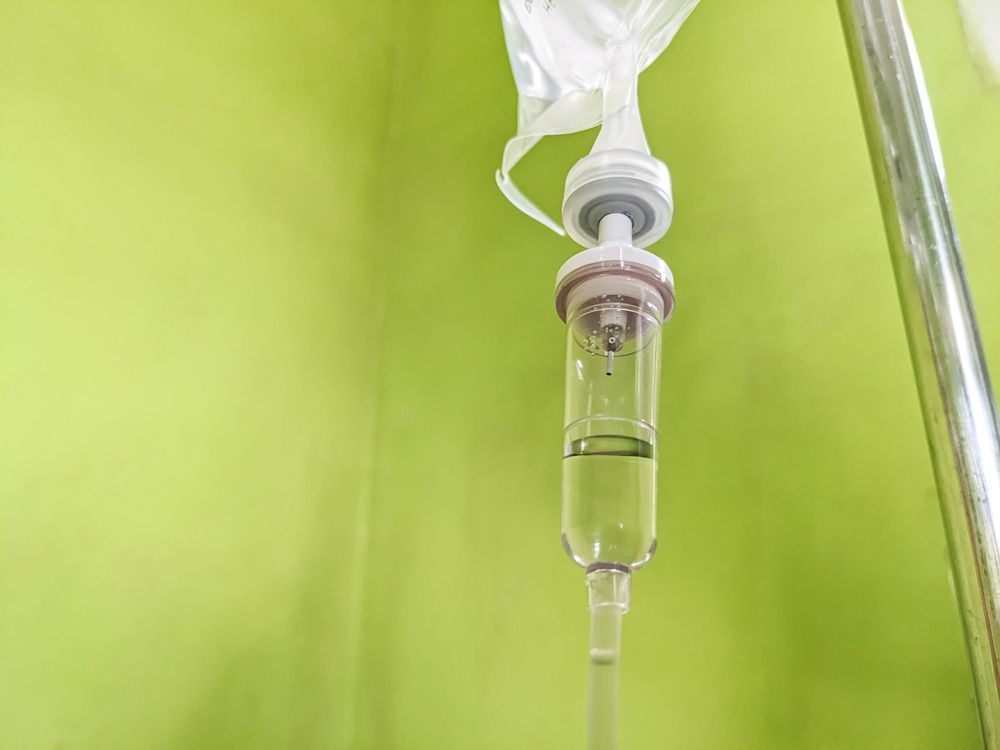IV Therapy for Athletes: Improving Performance and Recovery

In recent years, intravenous (IV) therapy has gained significant popularity among athletes looking to enhance their performance and expedite the recovery process. This innovative treatment offers an effective means of delivering essential fluids and nutrients directly into the bloodstream, allowing for rapid absorption and utilization by the body. In this article, we'll delve into the various facets of IV therapy, its benefits for athletes, and important considerations to keep in mind.
Understanding IV Therapy
IV therapy involves the intravenous administration of fluids and nutrients to promote hydration, improve physical performance, and support recovery. Athletes often experience intense training and competition, which can lead to dehydration and nutrient depletion. By using IV therapy, they can effectively address these issues and optimize their training efforts.
The process typically involves a healthcare professional inserting a catheter into a vein and administering a tailored solution that may include vitamins, minerals, and electrolytes. The composition can vary based on individual needs, ensuring that each athlete receives the appropriate support for their unique requirements.
The Science Behind IV Therapy
The science of IV therapy lies in its ability to provide immediate relief from physical stressors placed on the body during rigorous training. By bypassing the gastrointestinal tract, IV therapy allows for quicker absorption of nutrients compared to oral supplements. This fast delivery system can be crucial for athletes who need to recover quickly between training sessions or events.
Moreover, many vitamins and nutrients are more bioavailable when administered intravenously, meaning that the body can use them more efficiently. Components such as Vitamin C, B vitamins, and electrolytes are often included in IV solutions, each playing a pivotal role in energy production, hydration, and muscle function.
Key Components of IV Therapy
IV therapy typically includes a variety of components designed to optimize an athlete’s performance and recovery. Common ingredients found in many IV solutions are:
- Electrolytes: Essential for maintaining fluid balance and preventing muscle cramps.
- Vitamins: Particularly B vitamins and Vitamin C, which assist in energy metabolism and immune function.
- Glutathione: An antioxidant that supports recovery and reduces oxidative stress.
- Amino Acids: Vital for muscle repair and growth after intense workouts.
The specific formulation can be adjusted to fit an athlete's particular demands or health conditions, making IV therapy a versatile option for performance enhancement.
The Role of IV Therapy in Sports
IV therapy can play several roles in the context of athletic performance. It’s not only about staying hydrated; it’s also about ensuring the body has all the necessary tools to perform at its best.
Enhancing Athletic Performance
Hydration is crucial for maintaining peak performance levels. Even mild dehydration can negatively impact an athlete's strength, endurance, and overall performance. IV therapy provides a targeted solution that can help maintain optimal hydration levels, especially during demanding training regimens or competitions.
Additionally, the rapid administration of nutrients can provide a pre-event boost, helping athletes feel energized and ready for peak performance. As athletes are often traveling or working under tight schedules, the convenience of receiving quick IV infusions can be invaluable.
Speeding Up Recovery Time
Post-exercise recovery is critical to an athlete's overall training plan. IV therapy can significantly reduce recovery times by replenishing fluids and nutrients lost during workouts. This allows the body to repair itself more efficiently and prepares athletes for subsequent training.
Quick refueling also helps in reducing muscle soreness and fatigue, enabling athletes to return to their rigorous routines without prolonged downtime. The therapeutic effects of certain vitamins and amino acids can further support muscle recovery and reduce inflammation.
Benefits of IV Therapy for Athletes
Hydration and Nutrient Delivery
One of the primary benefits of IV therapy is its ability to deliver hydration and nutrients swiftly. When compared to traditional oral rehydration methods, IV solutions ensure immediate results. This can be particularly beneficial before and after intense exercise sessions.
Moreover, athletes can tailor their IV sessions to include specific vitamins, ensuring they are not only hydrated but also fortified with the nutrients necessary for optimal performance and recovery.
Immune System Support
A robust immune system is vital for athletes, as rigorous training can often deplete immune defenses. The vitamins and minerals provided through IV therapy can bolster the immune system and help fend off illnesses that may disrupt training routines.
Certain components, such as Vitamin C and zinc, are crucial in supporting immune function, reducing inflammation, and promoting recovery post-exercise.
The Safety and Risks of IV Therapy
Potential Side Effects
While IV therapy is generally safe, it is not free of risks. Potential side effects may include:
- Infection at the injection site
- Vein irritation or inflammation
- Fluid overload leading to swelling or discomfort
It is essential for athletes to consult with a qualified healthcare professional before beginning any IV therapy regimen to mitigate these risks and ensure a safe experience.
Precautions and Contraindications
Some individuals may have specific contraindications or conditions that make IV therapy unsuitable. Conditions such as kidney disease, certain heart conditions, or known allergies to ingredients in IV solutions should be disclosed to providers prior to treatment.
Healthcare professionals can also offer guidance on the appropriate frequency and type of IV therapy, ensuring it aligns with an athlete's overall training and health goals.
How to Incorporate IV Therapy into Training Regimen
For athletes looking to integrate IV therapy into their routines, a strategic approach is essential. Timing, frequency, and selection of the right therapy play a pivotal role in maximizing benefits.
Timing and Frequency of IV Therapy
The timing of IV therapy treatments can significantly affect their efficiency. Many athletes choose to receive therapy before major events or competitions to ensure they are at peak performance levels. Others may opt for post-session infusions to facilitate recovery.
Frequency will vary depending on the individual athlete's needs, the intensity of their training, and their overall health. Consulting with a healthcare provider can help in establishing an effective schedule.
Choosing the Right IV Therapy for Your Needs
As noted, the selection of IV therapy solutions can vary widely. Athletes should be aware of their unique nutritional requirements and discuss options with healthcare professionals. Customized IV packages can be created based on specific goals, such as hydration, recovery, or immune support.
In conclusion, IV therapy is an increasingly valuable tool for athletes dedicated to improving their performance and recovery times. By understanding its components, benefits, and safety considerations, athletes can make informed choices that align with their training goals.
Get In touch

14891 North Northsight Blvd Suite 118, Scottsdale, AZ 85260

8AM-8PM (Mobile)
8AM-6PM (In-clinic)
QUICK Links
We Accept

We accept cash and all major credit cards. Our services are also HSA & FSA (Health/Flexible Savings Account) approved!
© 2016-2025 Arizona IV Medics | All rights reserved | Privacy Policy | Powered By OMG Marketing







